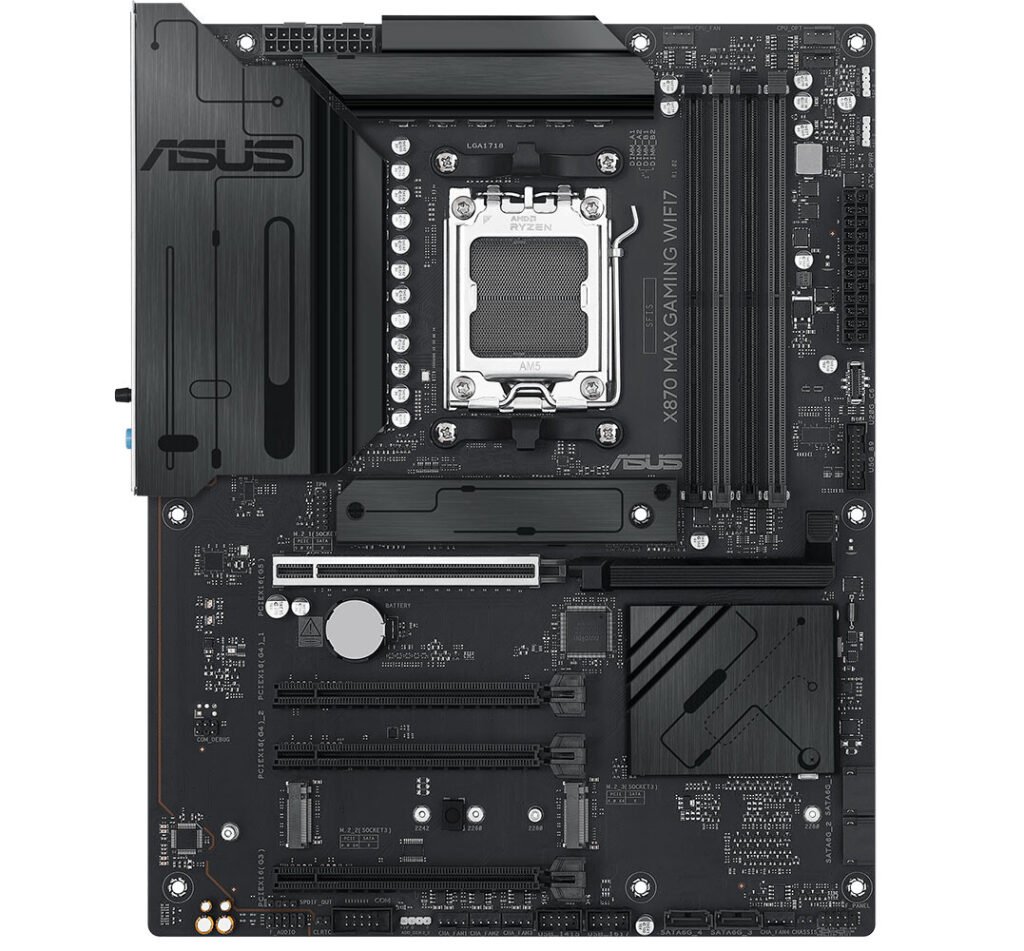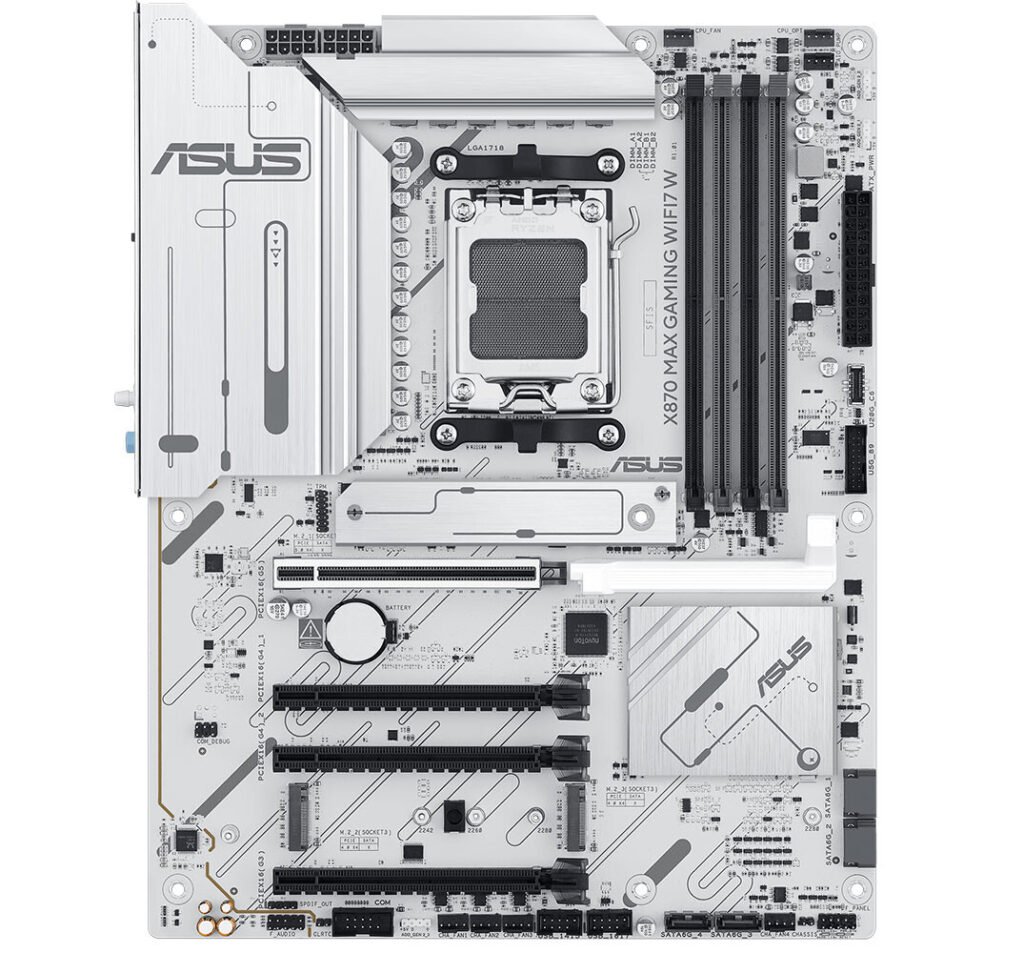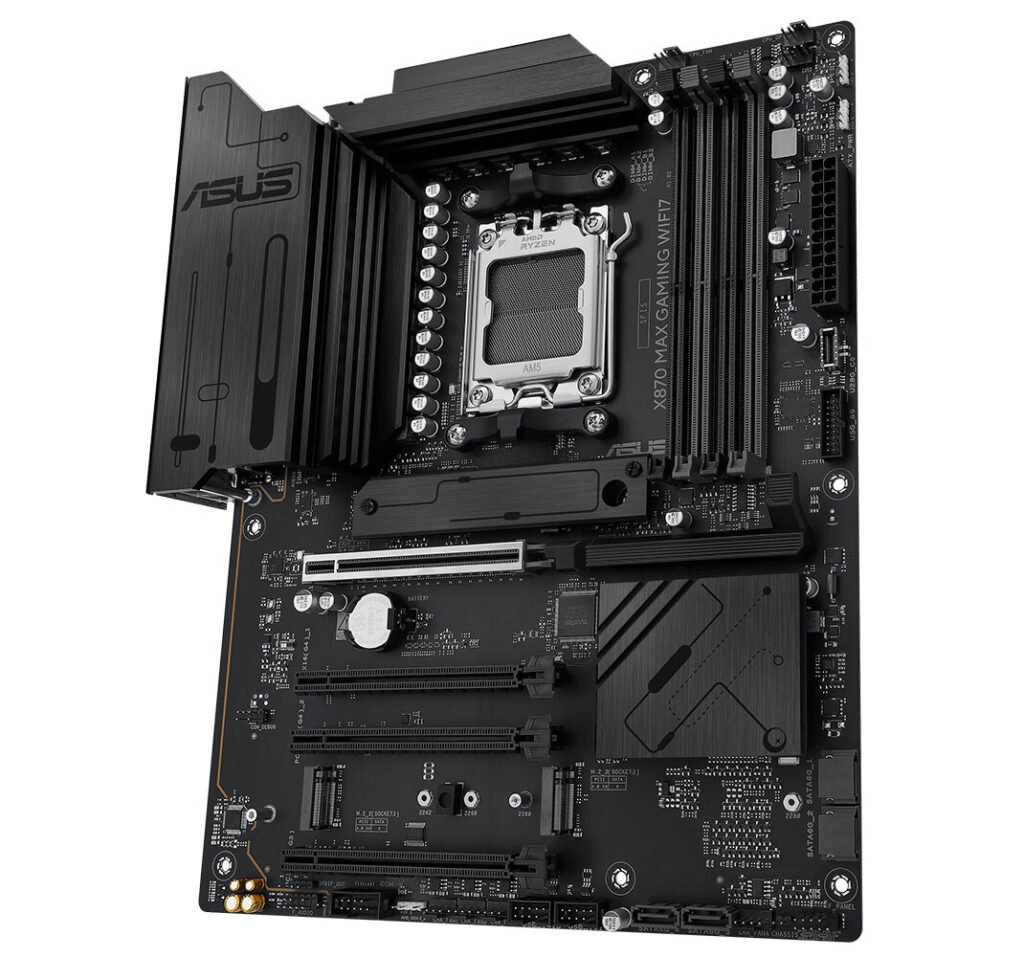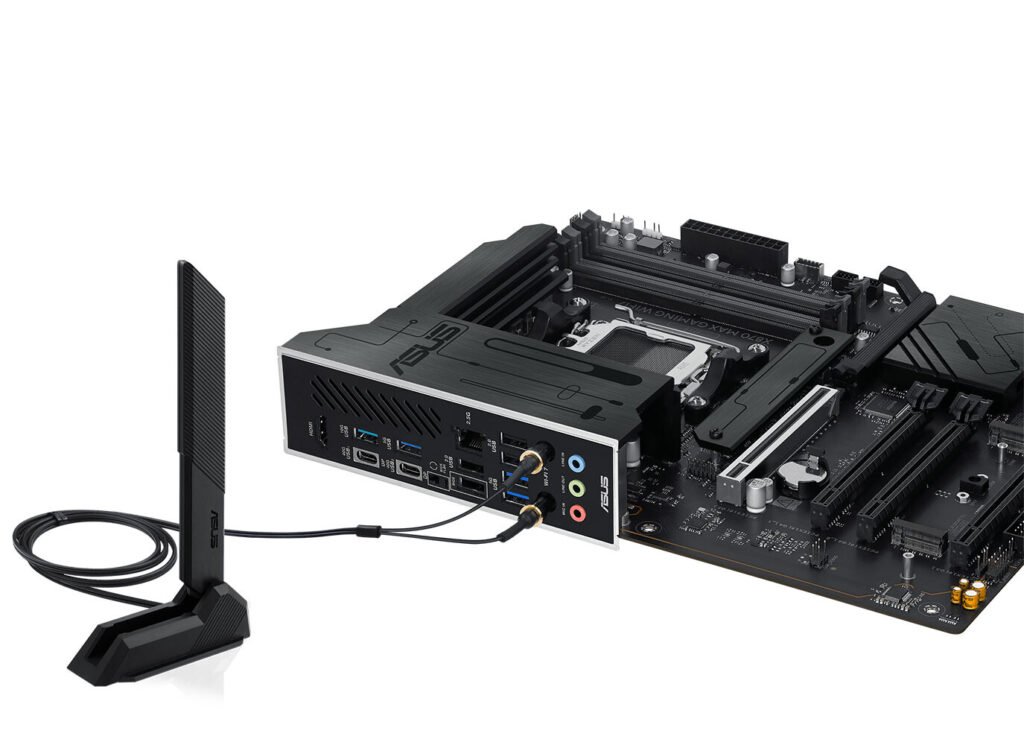ASUS has expanded its AM5 motherboard lineup with the launch of the X870 MAX Gaming WiFi7. This new board is part of the company’s push into the affordable gaming segment and comes in two visual variants—a standard black edition and a white version known as the X870 MAX Gaming WiFi7 W. The latter features a white PCB and matching white and silver heatsinks, catering to builders looking for lighter-themed setups.
Positioned below the TUF Gaming X870 Plus and distinct from the Prime series, the X870 MAX Gaming is aimed squarely at value-focused gamers. It is designed to compete with similarly priced options from GIGABYTE’s Gaming X and MSI’s Gaming Plus lineups. Built on the ATX form factor, the board takes power through a 24-pin ATX connector and dual 8-pin EPS connectors, feeding a 12+2+1 phase VRM setup with 80 A power stages for the CPU.


The AM5 socket supports Ryzen 7000 and newer processors, and is connected to four DDR5 DIMM slots, supporting dual-channel memory configurations. For expansion, the board includes one PCIe 5.0 x16 slot for graphics cards, which is directly linked to the CPU. Additionally, there are three more physical x16 slots on the board—two of which are Gen 4 x1, and the remaining one is Gen 3 x1.
For storage, the motherboard offers a total of three M.2 NVMe slots. The primary M.2 slot supports PCIe Gen 5 x4 speeds and is connected to the CPU. A second CPU-attached M.2 slot operates at PCIe Gen 4 x4. The third slot, connected through the X870 chipset, also runs at Gen 4 x4. Users also get four SATA 6 Gbps ports for traditional drives.
On the rear I/O, the board offers several USB options. Notably, it includes two USB4 Type-C ports with 40 Gbps bandwidth, one USB 3.2 Gen 2 Type-A port (10 Gbps), three USB 3.2 Gen 1 (5 Gbps) ports, and four USB 2.0 ports. Internally, the board provides a 20 Gbps USB-C header and two more 5 Gbps USB ports through a standard header. Display outputs include both HDMI and DisplayPort, useful for users relying on integrated graphics.


Wireless networking is handled by a Wi-Fi 7 and Bluetooth 5.4 module, likely from MediaTek. A Realtek controller powers the 2.5 GbE Ethernet port. For onboard audio, ASUS has chosen the entry-level Realtek ALC892 codec, which is common in budget-oriented boards.
ASUS is expected to price the X870 MAX Gaming WiFi7 just above the $200 mark, making it one of the most affordable options based on the X870 chipset. This positions it as an accessible entry point for gamers building around AMD’s latest platform, while still offering PCIe Gen 5 support, Wi-Fi 7, and a modern I/O feature set.







